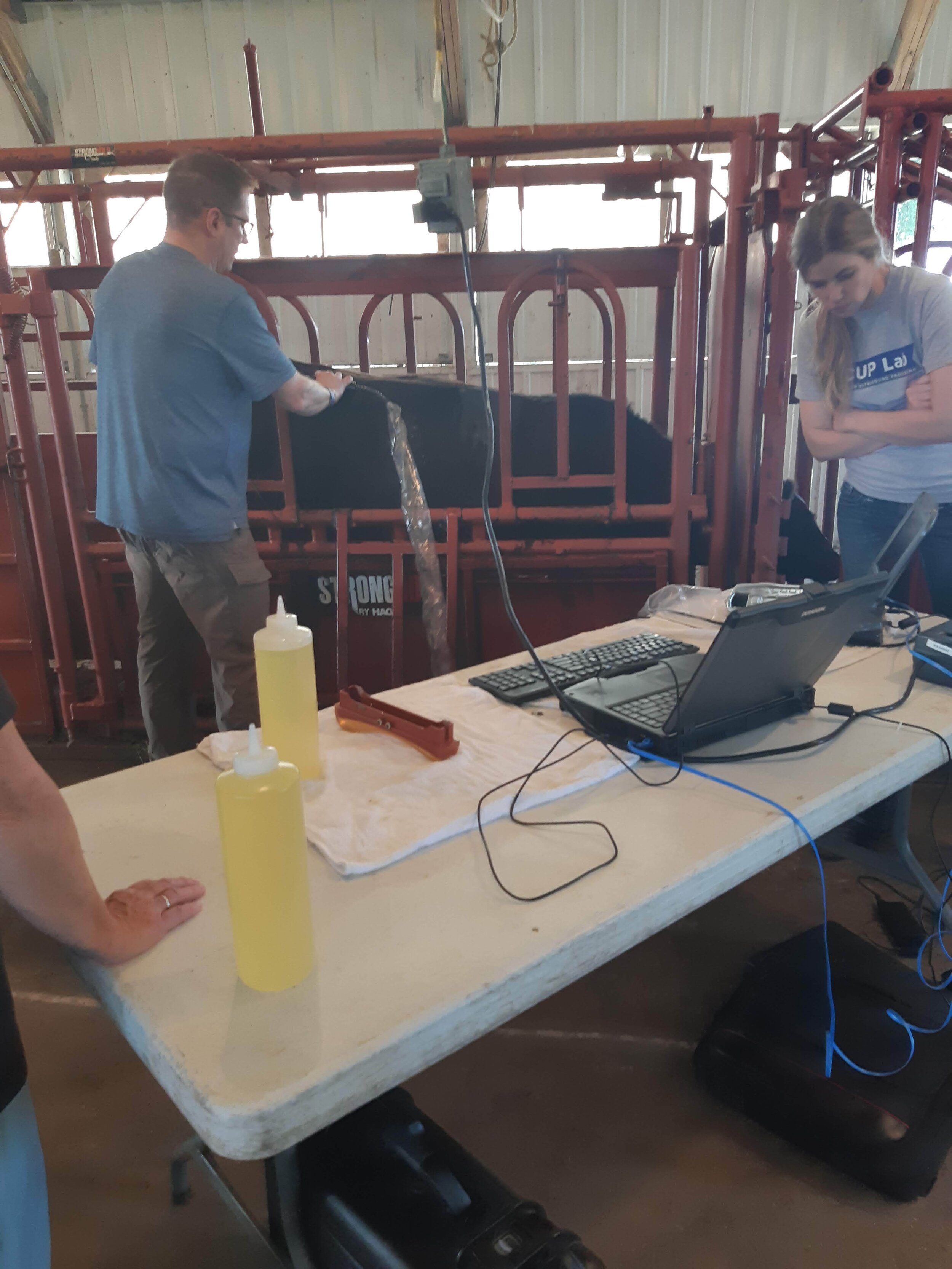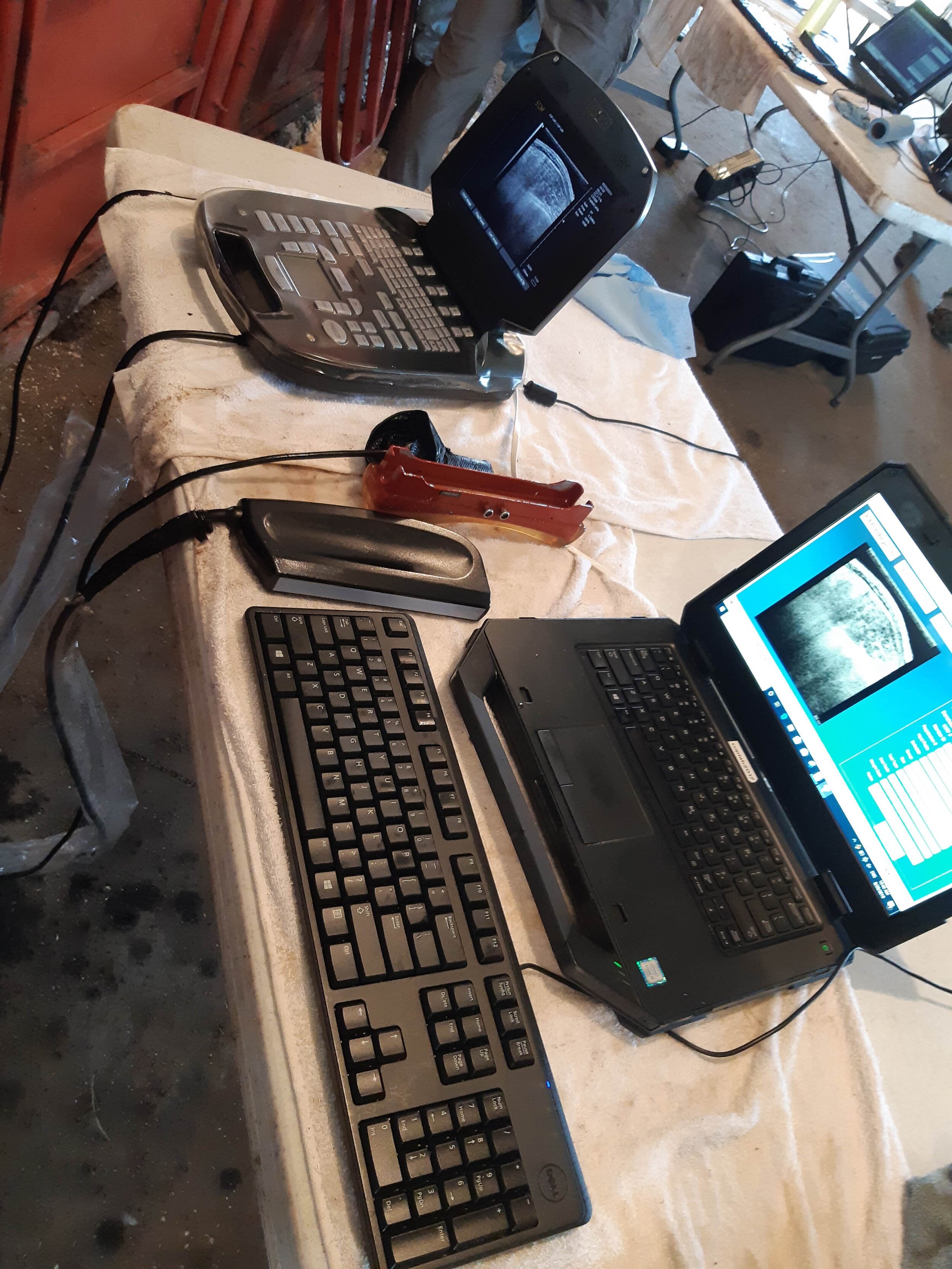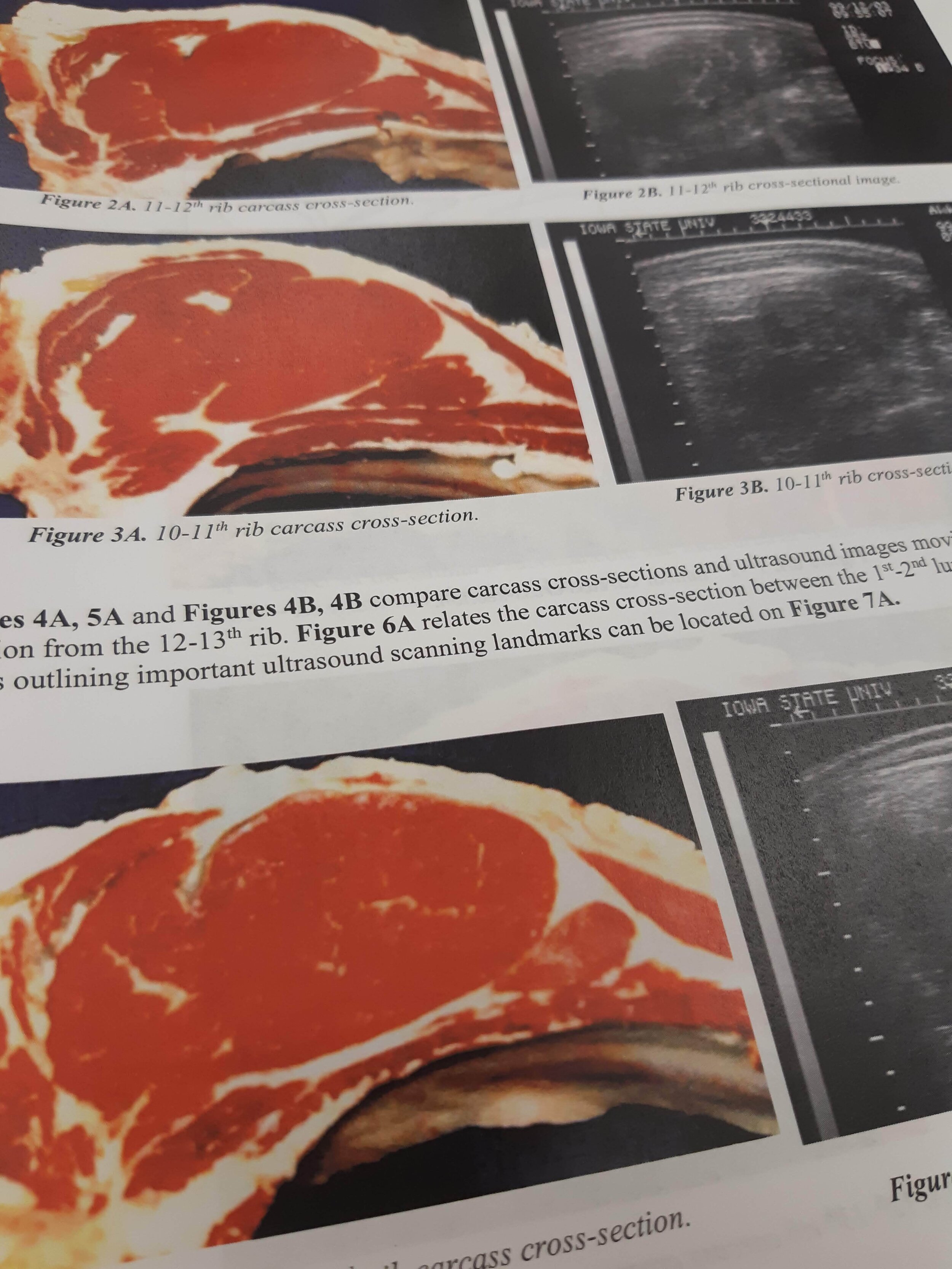Live beef carcass ultrasounds now on offer in the Maritimes
/by Amy Higgins
The Maritime provinces now have access to a technology that was historically reserved for bull selection at larger sales such as the Maritime Beef Test Station sale in Nappan, N.S., or in a private situation where it was feasible to get the ultrasound technician out of Quebec.
Live animal ultrasound technology for carcass traits is now within reach for Maritime beef producers thanks to a Nova Scotia Cattle Producers (NSCP) program. (Word on the street for sheep producers: they also have the offset to the scanning probe that can be used for sheep).
This technology is particularly useful in two aspects of beef production: selection of breeding stock and feedlot projection.
For the purposes of this article, I will focus on the former. In beef production, carcass traits are economically and highly heritable.
Before the use of ultrasound in beef cattle, formal progeny testing was the only method to collect carcass data on seedstock. Test bulls would be bred to cows, with the resulting progeny finished to slaughter and carcass measurements taken. As you can imagine, that process is time-consuming, expensive, and impractical for many producers. It may take three years – from breeding to having a harvestable animal – to have any valuable information with which to make decisions.
Live ultrasound technology provides information on yearling bulls and heifers so that you can select for carcass traits before you put them into your breeding program.
The carcass traits that can be extracted from the ultrasound scan are rump fat thickness, rib fat thickness, rib eye area, and percentage intramuscular fat. This information can be gleaned by the ultrasound technician taking scans in three locations on the animal.
Bulls are a great place to start this discussion, as a bull selection accounts for 50 percent of the genetic potential of your calf crop. If you select for strong carcass traits in your bull, that will be passed on to your calves. If the carcass traits of your female herd are unknown, you can still use this as a reasonable influencer for genetic improvement. If the carcass traits of your female herd are known, you can select for genetic improvement faster and with more accuracy.
A purebred or commercial producer can use the information to rank their replacement heifer candidates and determine which animals remain in their breeding herd program.
A registered purebred producer can get the scan data sent directly to their breed association to help determine their cattle’s expected progeny difference (EPD) values. Each association has age guidelines for collecting ultrasound data. For instance, the Canadian Angus Association’s acceptable age range for ultrasound scanning is 320 to 440 days for bull calves and 320 to 460 days for heifer calves.
A common question is, “Which is better, genomics or ultrasound scan data?” The answer is that both are valuable. Ultrasound scan data will increase the accuracy of your genomic testing.
For more information on how to get the technician out through the NSCP, please contact Ashley Anderson at aanderson@agricommodity.ca or 902-893-7455.
(Amy Higgins is the Maritime Beef Council’s industry coordinator. She raises purebred Angus cattle on the family farm in Quispamsis, N.B., and also operates a veggie box program. She’s president of both the New Brunswick and Maritime Angus associations.)














